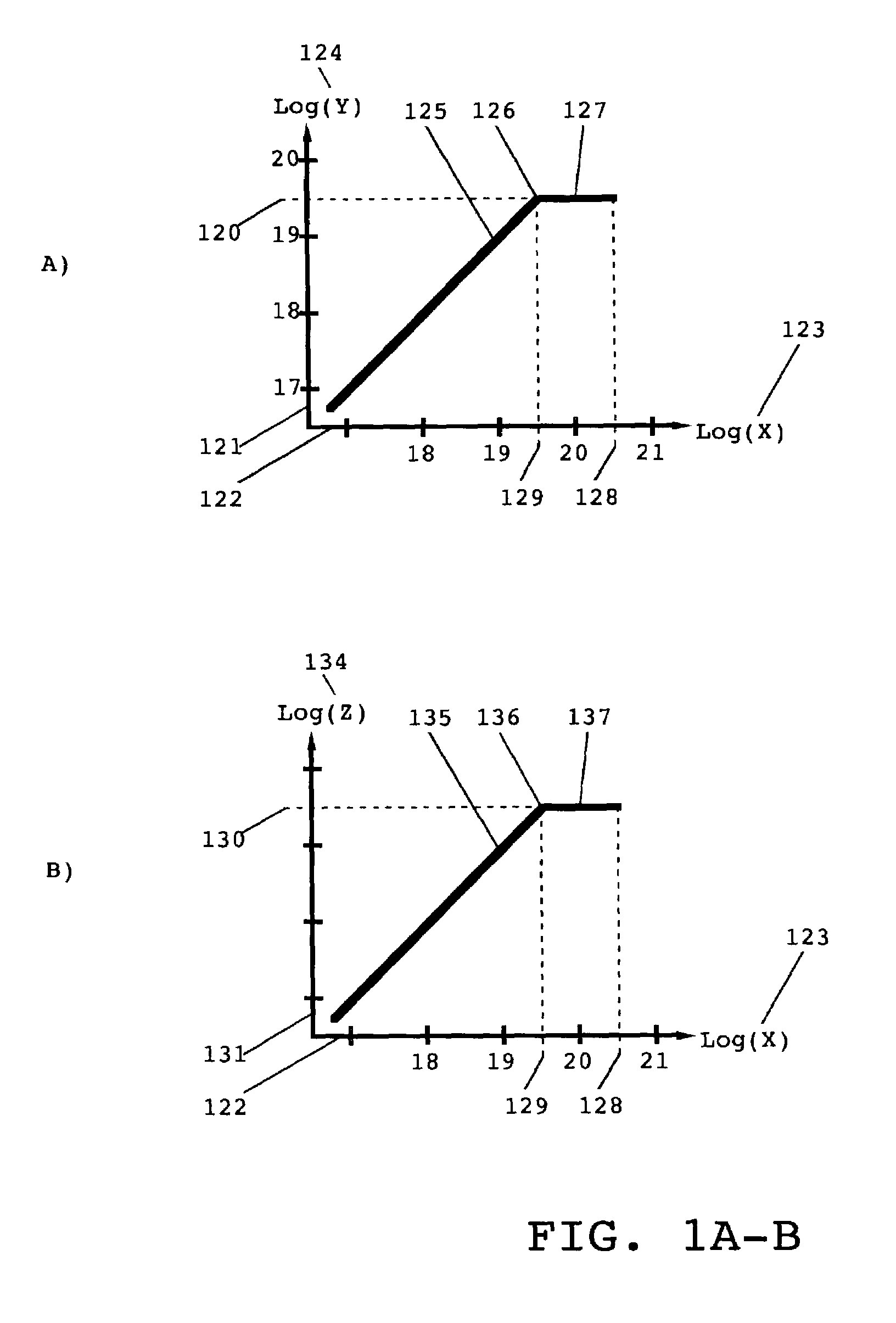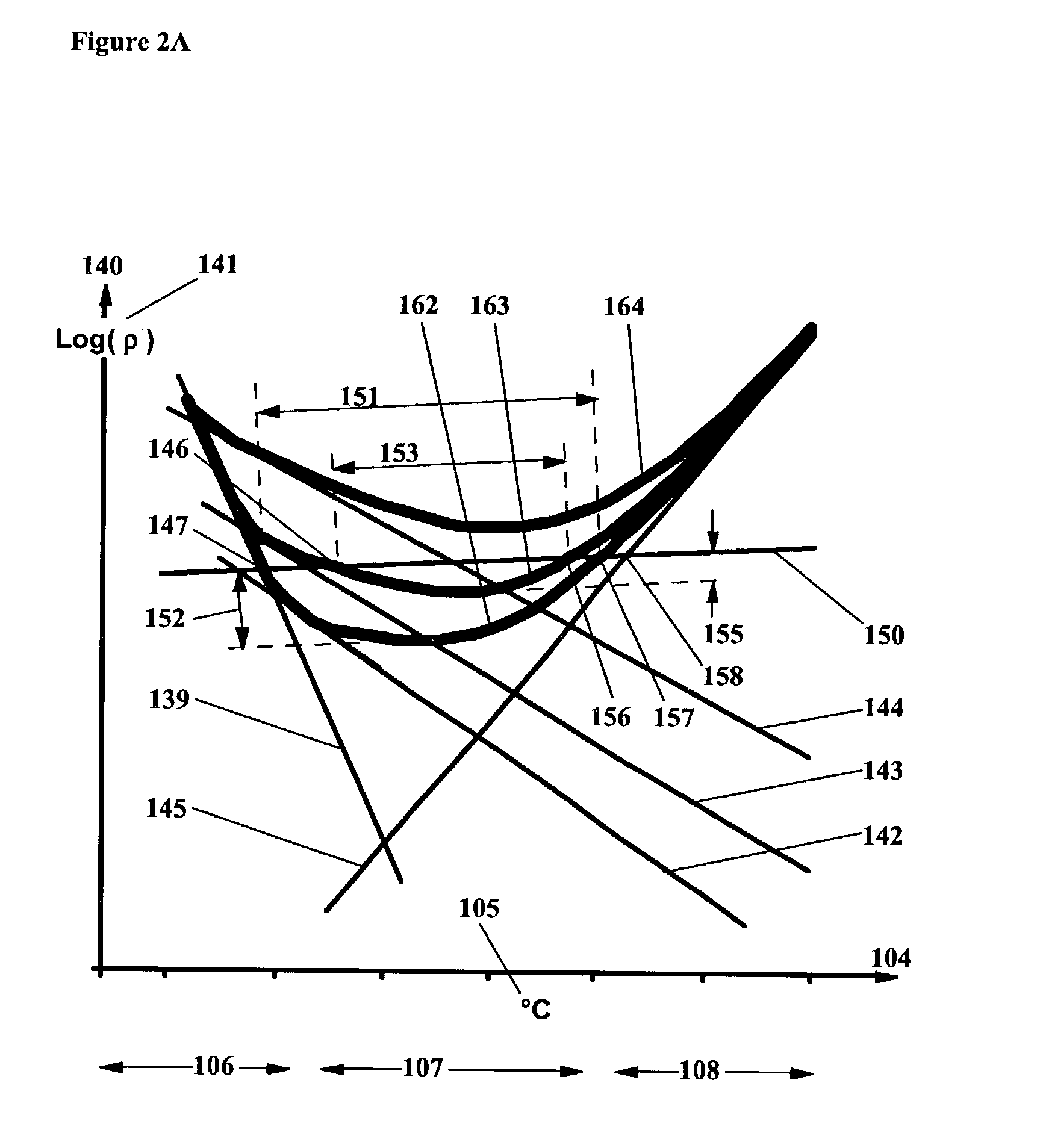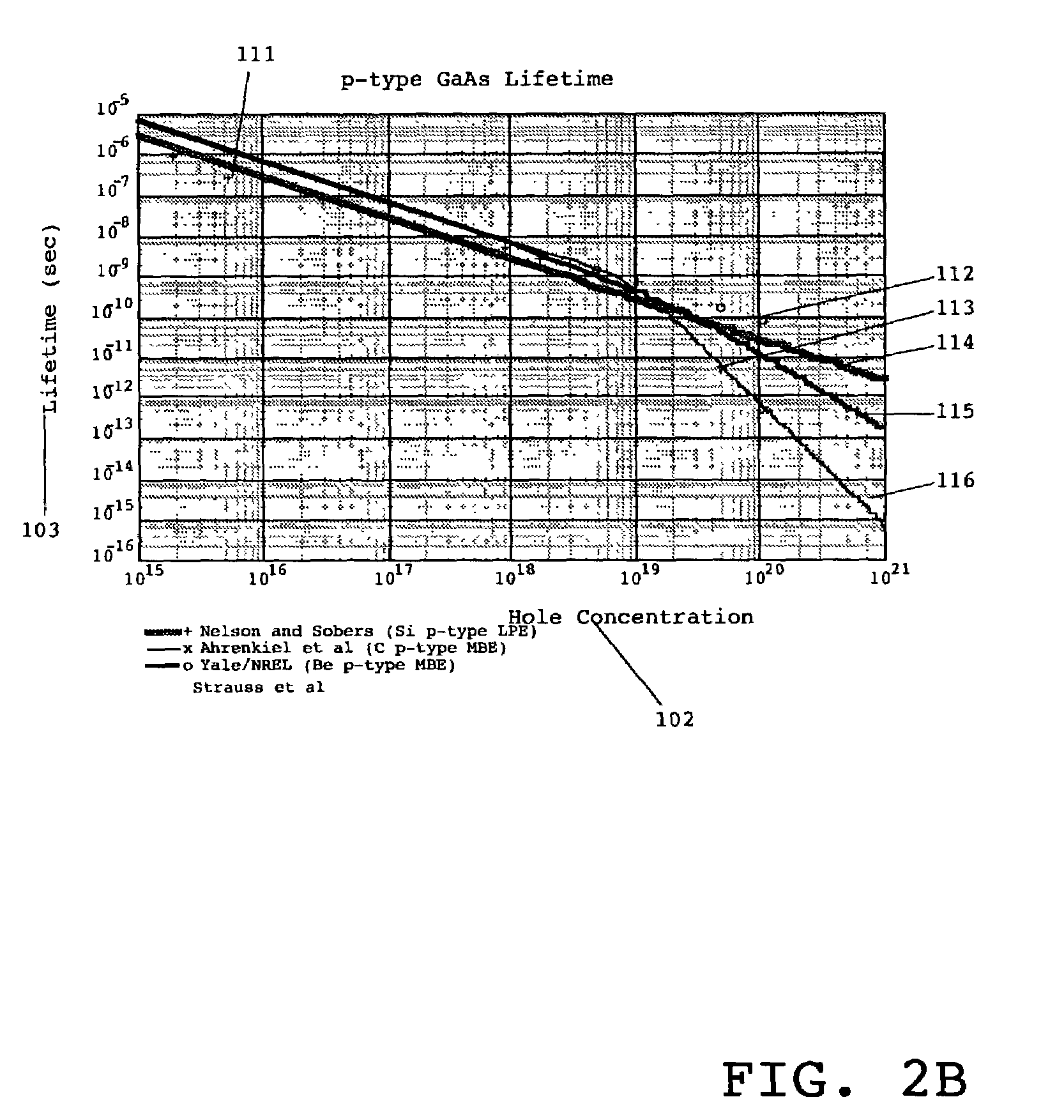Methods of hyperdoping semiconductor materials and hyperdoped semiconductor materials and devices
a technology of semiconductor materials and materials, applied in the direction of polycrystalline material growth, crystal growth process, chemically reactive gas, etc., can solve the problems of limiting device performance and reliability, counterproductive side effects, and failure to raise the maximum practical carrier concentration of matrix materials
- Summary
- Abstract
- Description
- Claims
- Application Information
AI Technical Summary
Benefits of technology
Problems solved by technology
Method used
Image
Examples
Embodiment Construction
[0054]As employed herein, a hyperdoped compound semiconductor material is a material having a suitable excess anion (cation) pressure incorporated into the matrix such that, compared to prior art materials, nearly all of the dopant atoms occupy cation (anion) sites, so that compensating effects such as interstitial dopants, amphotericity, crystalline defects such as anti-site or vacancy defects, dopant precipitation, or co-incorporation of contaminating species such as oxygen are greatly reduced. In a preferred, but not limiting embodiment on crystals containing GaAs, a process of hyperdoping involves creating an excess anion concentration (e.g., an excess As concentration) and permits the forcing of Be onto cation sites (e.g. Ga sites), without introducing a significant density of non-radiative recombination centers. Hyperdoping may be used to create materials with reduced radiative lifetime (because radiative lifetime is approximately proportional to doping density, higher doping ...
PUM
| Property | Measurement | Unit |
|---|---|---|
| hole concentration | aaaaa | aaaaa |
| temperatures | aaaaa | aaaaa |
| temperatures | aaaaa | aaaaa |
Abstract
Description
Claims
Application Information
 Login to View More
Login to View More - R&D
- Intellectual Property
- Life Sciences
- Materials
- Tech Scout
- Unparalleled Data Quality
- Higher Quality Content
- 60% Fewer Hallucinations
Browse by: Latest US Patents, China's latest patents, Technical Efficacy Thesaurus, Application Domain, Technology Topic, Popular Technical Reports.
© 2025 PatSnap. All rights reserved.Legal|Privacy policy|Modern Slavery Act Transparency Statement|Sitemap|About US| Contact US: help@patsnap.com



